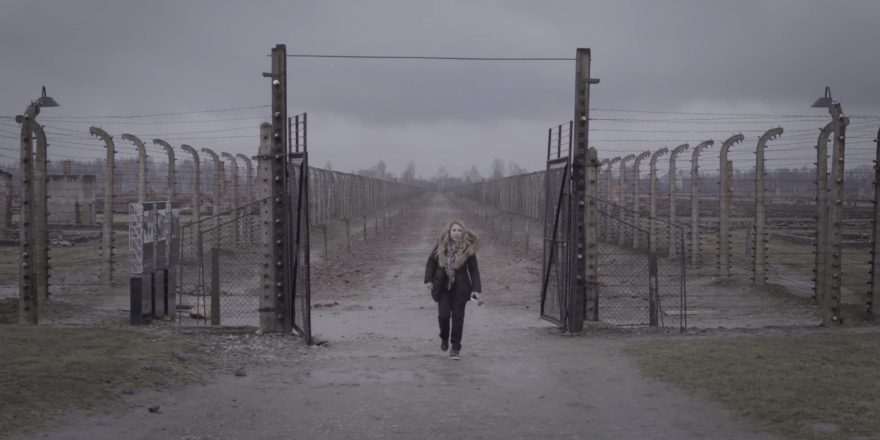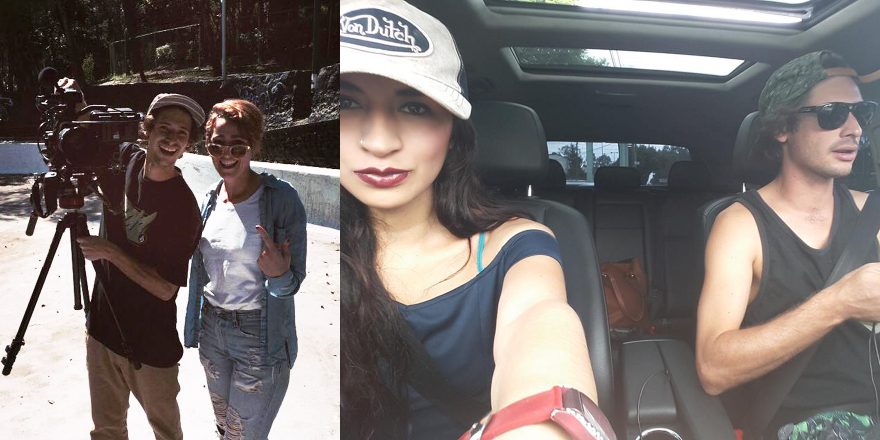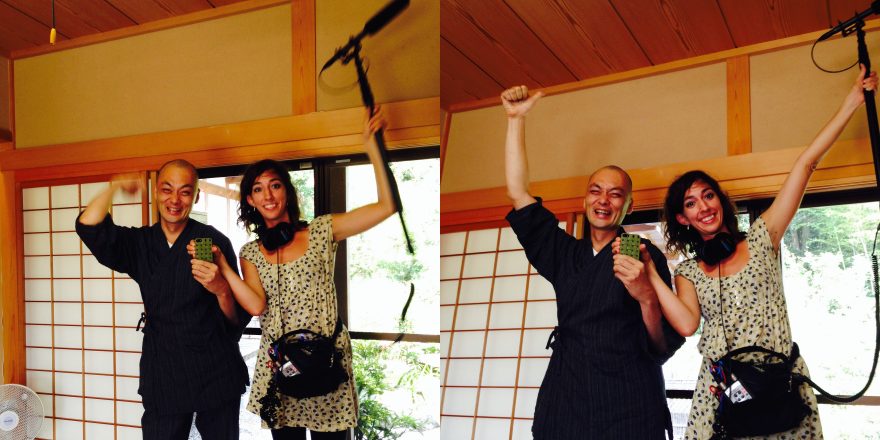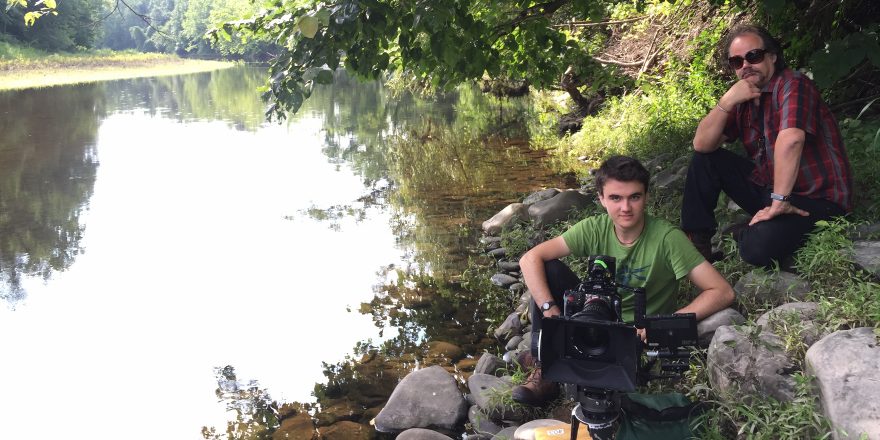I had a pretty unusual upbringing. I was born in Paris, and grew up between Brussels, Paris, London and New York City. My parents gave me a passion for travel, and I followed them everywhere. At 16, I was living on my own in Paris, pursuing my education in theatre, while preparing for my high school diploma. At 18, I took an intensive course at the MetFilm School in London, where each student had to write, produce and direct a short film. I had no film experience, but when it came to being on set and directing, it just felt … right – though I wouldn’t want anyone to see that short film!
After this experience, I became a film and television major at N.Y.U.’s Tisch School of the Arts. My first Tisch “exercise” film was a silent black-and-white short on cheese … and sex (my part-French identity has to come out once in a while). My first real short film at N.Y.U. was a romantic comedy, The Doorman, about a doorman who performs sexual favors for the elderly ladies in the building. The next one, Bed Bugs & Company, was an absurd comedy featuring a bed bug inspector who infests people’s apartments instead of examining them.
There’s something that always appealed to me in the entertainment industry – the entertainment part. As a filmmaker, I had the chance to distract an audience from their daily lives and problems, and make them laugh for the duration of a film. I absolutely loved that, and still do. There is nothing more rewarding than hearing an entire theater laugh at something you imagined, wrote and filmed (and nothing more dreadful if the audience stays quiet …).
My junior year, I decided to make a second thesis film, this time on a more serious – and personal – subject: U.S. immigration. I wrote a story about a young Czech doctor who gets held up at U.S. customs after a humanitarian trip to Uganda, while her boyfriend is waiting outside the airport to propose to her. Though fictional, Welcome was inspired by a personal experience, and I felt the need to let the world (or whoever would see the short film) know some harsh realities about the American immigration system. It was something like “film therapy,” confronting my own thoughts and feelings about a traumatic event, and having more than 50 people work with me to reenact that event. Welcome did really well on the festival circuit and online, and whilst presenting it to audiences all over the U.S. and Europe, I got a little taste of the social and educational impact that a film can have. It turned out I had made a political film … me, the girl who started off her career with a film about cheese and sex (PG-rated).
Right before starting the last semester of my senior year at Tisch, I was in Paris for winter break when the Charlie Hebdo attack and Hypercacher kosher supermarket siege took place. These events shocked me enormously, and in their aftermath I found it almost unbearable to read the news or go on social media. On the plane back to New York City, I decided to open a book I had been carrying with me for years but never had had the courage to read: Memorial des Morts sans Tombeau (Memorial of the Dead Without a Tomb), written by my late grandmother, Maryla Michalowski-Dyamant, an Auschwitz survivor. I read it very quickly, and was overcome with emotion because of the realization that I would never be able to ask my Nana the many questions I now had for her, and that she had dedicated her life to fighting anti-semitism, prejudice, racism and intolerance, but there was still so much more work to be done. That emotion, however, quickly turned into motivation; I was determined to make sure my Nana’s work was not in vain, and continue it for her in the 21st century.
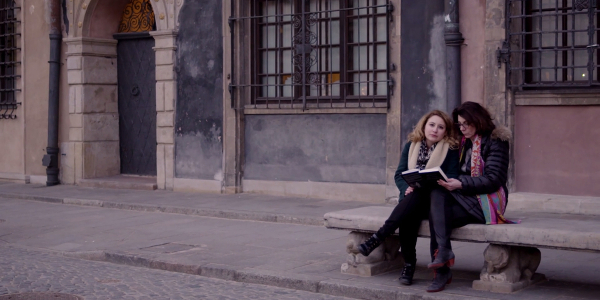
I called up my mother (Nana’s daughter), and asked her, “Mom, wanna make a film about Nana?” (The Nana I had lost a decade earlier, and never ever mentioned). My mother said yes. Three-and-a-half weeks later, we were shooting the film in Belgium, and in Poland – including in Auschwitz – with a team of mostly twentysomethings.
I don’t know what I was thinking when I first started the project. I didn’t even know if what I was making was going to be a short or a feature. All I knew was that I had to make this film, and I had to make it right then and there.
I was lucky enough to be in Sam Pollard’s Documentary Workshop class, and pitched my idea to him there. Though it was pretty vague in its vision, Sam supported me, giving me very useful advice and tips on interview techniques.
What I knew then is that I wanted to learn more about my grandmother, and understand the positive impact she’d had in her life. My mother and I tracked down about 15 people in Brussels from all ages and backgrounds who had met Nana, and we interviewed them. We then went to Poland – where Nana was from – and physically retraced her steps, with a two-camera team following us around. I wanted everything to be as real and genuine as possible – nothing was to be staged or re-shot. My mother’s and my reactions to what we were hearing and seeing needed to be true. I trusted my two camerapeople – Nick Walker and Julia Elaine Mills – enormously, as I had worked with them in the past, and instructed them to use their own judgment and sensitivity to film my mother and me in these difficult moments. It didn’t matter if it felt like they were intruding on privacy. Nick and Julia did an amazing job, and I will eternally be grateful.
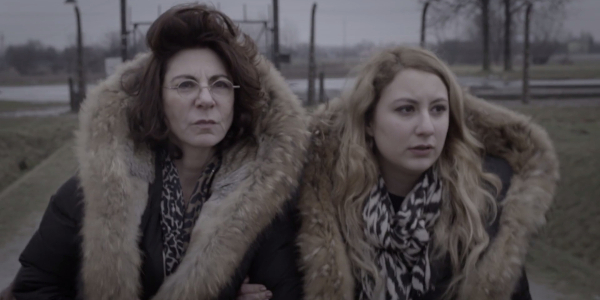
Three years after the shoot, Nana is still my full-time job. From fundraising, to editing, to festivals, tours, and now a theatrical release, I have been working on a project about the Holocaust for the better part of my early twenties.
It is hard to express what it’s like to work daily on a film about one of the biggest tragedies of all time, a tragedy that involves your entire family. At first, tears streamed down my face as I watched nearly 100 hours of archival footage of Nana. Along with my editor Corentin Soibinet and co-writer David Breger, I worked tirelessly to recount her harrowing past so it would never be forgotten or happen again. Watching this footage, nothing in the world made sense anymore. How could anyone live normally, knowing what human beings were capable of?
But the more I watched, the more I listened, the more I talked about it, the more distance I managed to get. I didn’t become desensitized, but I tried my hardest to self-protect. Despite all she had lived through, my Nana was someone full of joy and humor. That too was transmitted to me. Her love of life was contagious, and I try to pass it on to my audiences, along with the lessons of the Holocaust.
But when you’re a 22-year-old making your first feature and it is about the Holocaust, you get some … strange looks. No one expects it. No one thinks that the blonde, high-heel-wearing girl will answer, “I’m making a feature transgenerational documentary about my grandmother, who was an Auschwitz survivor and an activist for tolerance,” when they ask, “What are you working on?” And no one knows what to answer, or how to react. Some actually don’t believe you. That can become a problem. Because when you’re trying to do something so big, so serious, you need help from people who have experience. And that help, that trust is extremely hard to gain when those people don’t take you seriously. It’s also tough when you’re out having a good time with people your own age, and no one can relate to what you’re going through. So for a while I found myself stuck, halfway between millennials who I suddenly had nothing in common with, and prominent scholars who were disinclined to take me seriously.
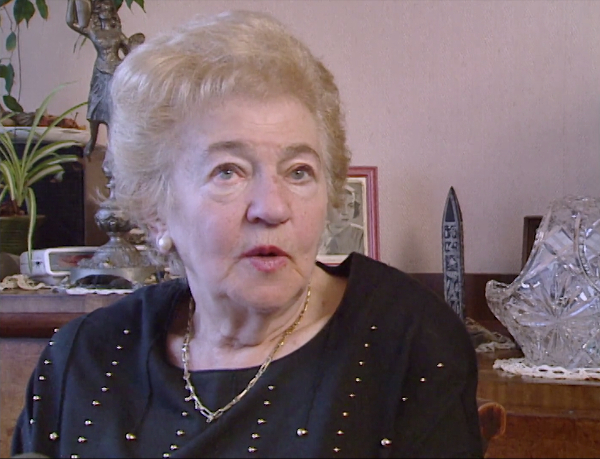
But as tough as that period was, it was a necessary step. My goal with Nana from the beginning has been to make the Holocaust relevant to people my own age and younger. Learning about it, and hearing firsthand testimonies, has always been a very potent and powerful tool to fight prejudice, intolerance and racism, but survivors are not here to tell their stories anymore. And if we don’t continue their mission, who will?
I know how to make this generation care, because I am part of this generation. And it was worth spending some time stuck between these worlds in order to close the gap between them; to make the academic scholarly world of Holocaust and genocide studies accessible to both teenagers and millennials, as well as the non-Jewish community.
It always pleases me to see millennials and kids from Generation Z, from all religious and ethnic backgrounds, attend my screenings. It makes me smile to hear them talk about my Nana while out with their friends at restaurants and bars. Because it is now part of their conversation, their value system. They will pass it on. The viewers see Nana as a call to action; my grandmother, 14 years after she passed away, teaches them to identify the warning signs of intolerance, whether it is in the classroom, in their personal life, or on a bigger socio-economic scale. And she shows them that everyone can take action, however small, to fight injustice.
Being young and caring about important subjects are not mutually exclusive.
I want to thank the many, many millennials who have been on this journey with me. I also want to thank the scholars, politicians and film-industry leaders who took me and my project seriously.
And, of course, I want to thank Nana, who has inspired more people than anyone can count, to fight for what’s right, with a touch of humor to help us in this long battle.


